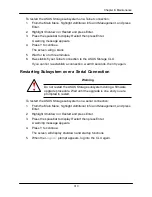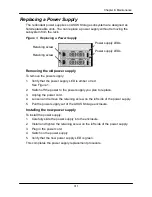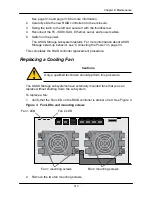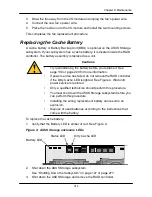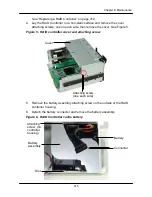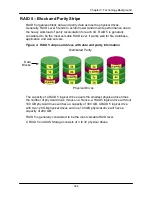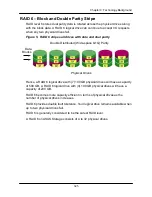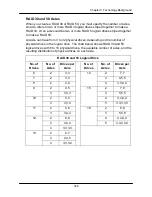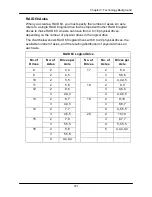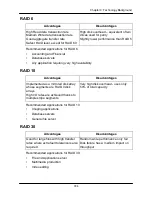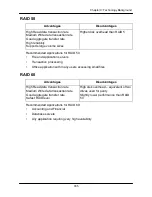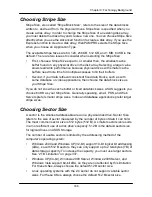
323
Chapter 9: Technology Background
RAID 3
– Block Stripe and Dedicated Parity
RAID 3 organizes block data across multiple physical drives and parity data on a
dedicated drive. Generally, RAID Level 3 tends to exhibit lower random write
performance due to the heavy workload of parity recalculation for each I/O.
Heavy I/O loads with a large number of writes tends to work the parity drive
harder in proportion to the other drives in the logical drive.
ASUS implements RAID 3 with block-level striping, rather than byte-level striping.
RAID 3 stripes data across multiple drives with parity on a dedicated drive
Dedicated Parity
Data
Blocks
Physical Drives
The capacity of a RAID 3 logical drive equals the smallest physical drive times
the number of physical drives, minus one. Hence, a RAID 3 logical drive with four
100 GB physical drives will have a capacity of 300 GB. A RAID 3 logical drive
with two 120 GB physical drives and one 100 GB physical drive will have a
capacity of 200 GB.
A RAID 3 on ASUS Storage consists of 3 to 32 physical drives.
Summary of Contents for DS300f
Page 1: ...ASUS Storage DS300f DS300i User Manual Version 1 0 ...
Page 10: ...x Language 178 Closing Smart NAS Console 178 ...
Page 27: ...8 Chapter 1 Introduction to ASUS Storage ...
Page 57: ...3 8 Chapter 2 ASUS Storage Installation ...
Page 73: ...54 Chapter 3 ASUS Storage Setup ...
Page 164: ...14 5 Chapter 4 Management with ASUS Storage Management ...
Page 221: ...202 Chapter 5 SmartNAVI ...
Page 235: ...216 Chapter 6 Management with the CLU Figure 4 Controller Status LED Controller Status ...
Page 337: ...318 Chapter 8 Maintenance ...
Page 425: ...406 Chapter 11 Support ...
Page 433: ...414 Appendix A Setting up NAS Network Drives ...
Page 449: ...430 Index ...


